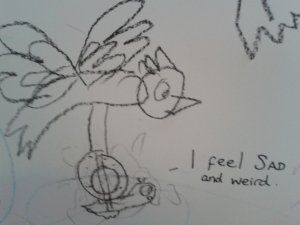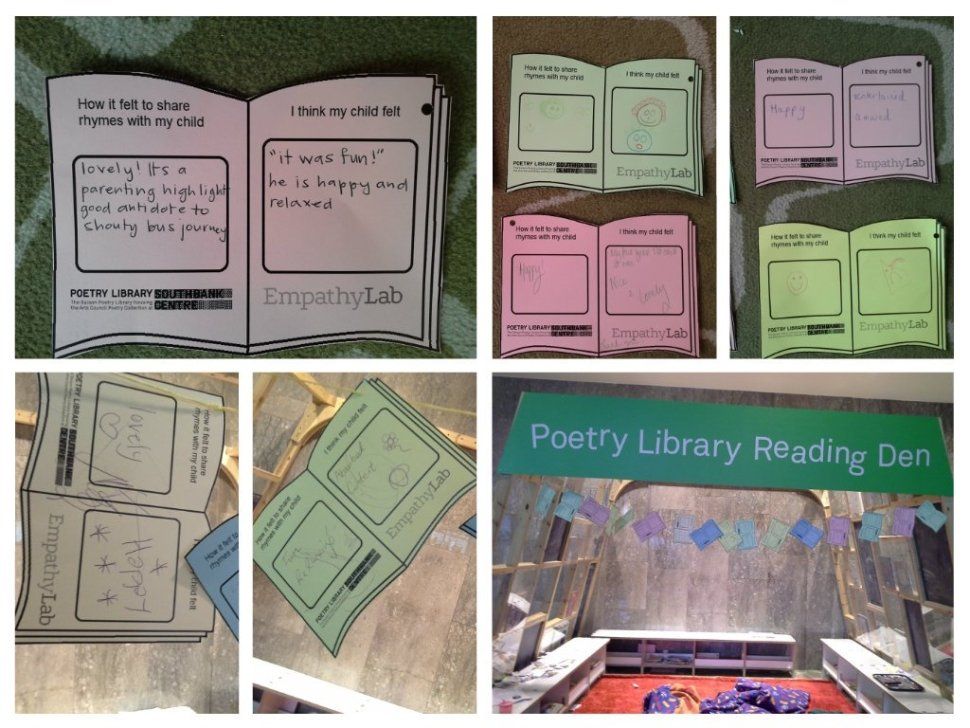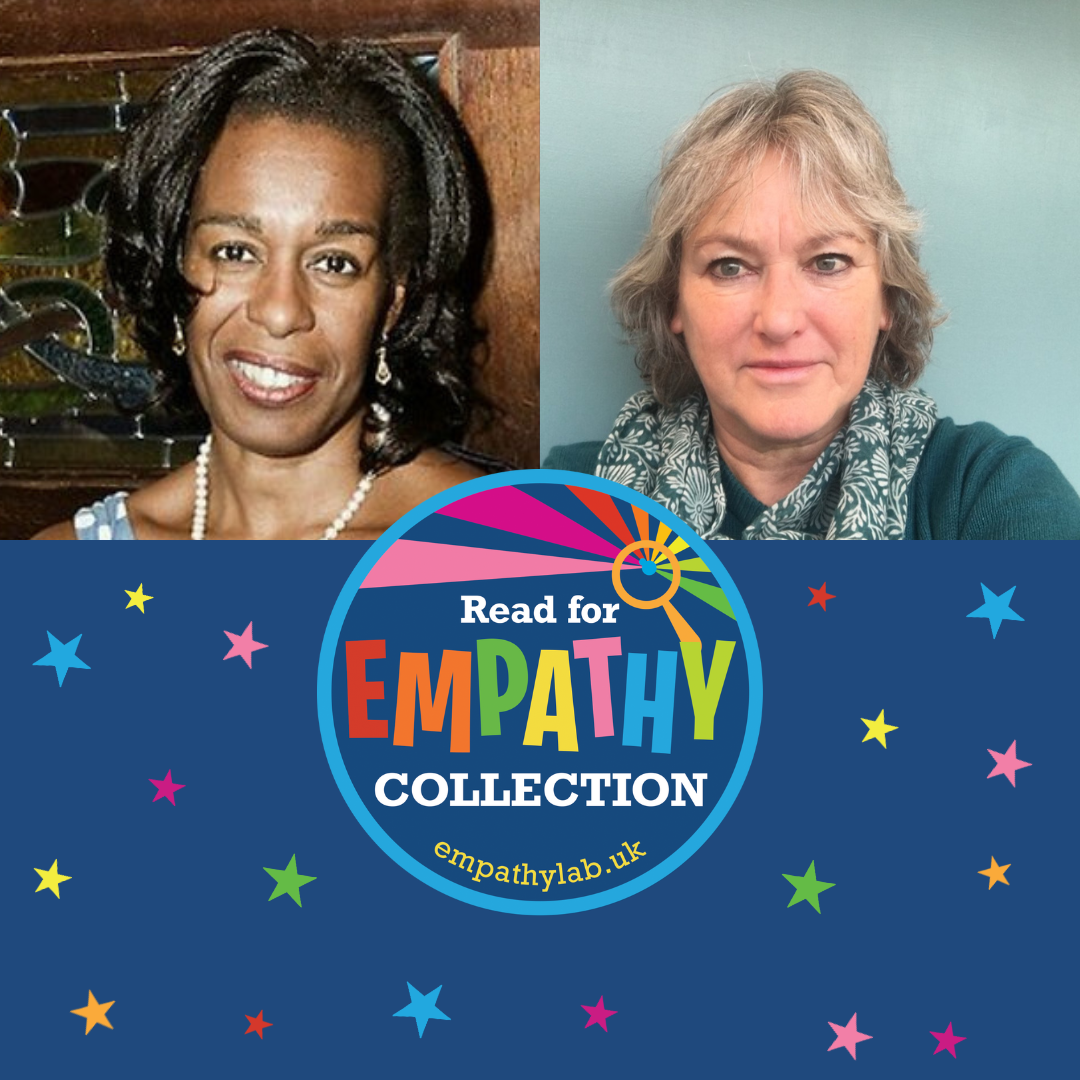EMPATHYLAB AT #IMAGINEFEST
- By EmpathyLab
- •
- 31 Jan, 2017
- •

We experimented with events using stories as a springboard for families to share and explore feelings, and build children’s language for emotions. Our partners were the Poetry Library and Inclusive Minds.
Norman the Slug
The author/illustrator Sue Hendra led a session exploring the feelings of Norman the Slug, who longs to be a snail. She shared an hilarious account of the day she tried to write the story, and the disasters that befell her, including aliens eating her pencils. Along the way she named all her feelings that day – a powerful model of how to focus an author event on helping children understand their own and other people’s feelings.
We had really enthusiastic feedback from parents:
“It’s great to hear stories and discussion about feelings, and help kids feel more confident in expressing themselves. They see it’s important to talk about how they feel.”
Joanna Sholem (@BookJo): “I can’t wait to hear more about what you, Sue and your team thought of the day. The activities really engaged kids!”
Jo Byatt (@joannebyatt1) ‘This is my daughter Sienna’s artwork 🙂 (see below) we had a fab time thank you!’
Imagine Festival - Feelings Wall
After Sue’s stage session we moved to making tables and a Feelings Wall. Sue helped children make Norman the Slug, and name his different emotions as the story progressed – grumpy, confused, happy, weird, scared, sad…
One parent said: “It was interesting to explain what each feeling was through pictures; we explained two new words by drawing them.”
Sue Hendra said: “I had a fantastic time on Monday. Thank you so much for the opportunity to take part and to do something a little bit scary but very exciting.”
Alex Strick from Inclusive Minds said: “EmpathyLab is an exciting and inspired concept. People were absolutely raving about Sue afterwards – and the slugs were a stroke of genius for building on her lovely presentation. There was barely any white space left on the Feelings Wall by the end of the day.”
Rug rhymes
We experimented, through a great Poetry Library partnership, with a rug rhyme session in which the rhymes – like Row, Row Your Boat – needed parents/carers to be face to face. The session showed how families can use poems and rhymes as an extra tool for building strong, secure relationships. Afterwards, everyone involved talked about, wrote about and drew their feelings about enjoying rhymes together. These lovely pictures say it all!



The collection consists of 65 books for 3-16 year olds, each chosen for its unique contribution in building young people’s empathy.
The primary collection for 3-11 year has 40 books; the secondary collection features 25 books for 12-16 year olds.

I am very fortunate to have been on the Read for Empathy booklist judging panel over the past few years.
I’m also a practising classroom teacher so I would like to consider how the books on the list can influence what happens in a school.
Firstly, along with many other schools, reading aloud is an important part of our school day, every day, almost without fail. All the teachers at my school are aware of the EmpathyLab booklist, and often use it as a basis for choosing their next class read. Knowing that the books touch on important aspects of our children’s lives is key; we all understand how important representation is in stories. These are books that make a difference, that lead to passionate discussions in the classroom and can actually influence children’s behaviour .
The booklists become increasingly valuable. We have a couple of hundred empathy texts at our school – they are there on merit. Staff often refer to previous lists if there as a particular aspect of empathy that they want to include or share with the children.
Our Year 6 Reading Champions often seek out picture books from the list to take in to KS1 and Reception when they read stories, so we already have the next generation educating each other about the importance of empathy. I love the fact they often meet beforehand (they tend to work in twos) to discuss what questions they might want to ask the children once the story has been read. After each booklist is released, they also spend several of their Friday recommendation slots in assembly talking about a couple of the books. We have parents in on our Friday assembly so it’s a great way to share the texts with them and help raise their awareness of our work.
We often use the books as our teaching texts for English, partly because they encourage excellent writing but also because they provide a fantastic opportunity for our pupils to develop their empathy skills. The Wild Robot by Peter Brown, Miraculous Journey of Edward Tulane by Kate DiCamillo, Freedom by Catherine Johnson, Eyes that Kiss in the Corners by Joanna Ho and A Street Dog Named Pup by Gill Lewis are all books that have made in into our English curriculum as a result of being on one of the Read for Empathy booklists. Well, that’s not strictly true - Edward Tulane was there before that as it’s one of my favourite ever books, but you hopefully take my point.
Reflecting on our empathy journey over the past few years, I’ve also found that the more books children read that address empathy, where they can relate to the characters and their choices, the more books they want to read. It’s almost a virtuous circle. Many begin to realise that such books can empower them to think about situations.
For example, as soon as we finished A Street Dog Named Pup last year, several of them immediately wanted to read other books by Gill Lewis. Because empathy is a thread that runs through much of her work ( Gorilla Dawn , Moon Bear , The Closest Thing to Flying and so on). Thanks to EmpathyLab's lists, I was able to point them in the direction of several other books, by her and others.
I think we agree that teaching children about empathy and providing them with opportunities to develop it is one of the most important gifts we can give them as adults. The fact that empathy has gone from being something that schools sort of understood a few years ago to being something that has got an increasingly solid evidence base is crucial.
There’s always been anecdotal evidence that reading stories is important for children and that it can change how they think but now that’s backed up with research. The empathy revolution (and it is a revolution) is only going to pick up more momentum over the next few years as the need for it becomes ever more apparent. Working in schools and in the world of children’s books means that we’re in the front line. There’s nowhere else I’d rather be.
